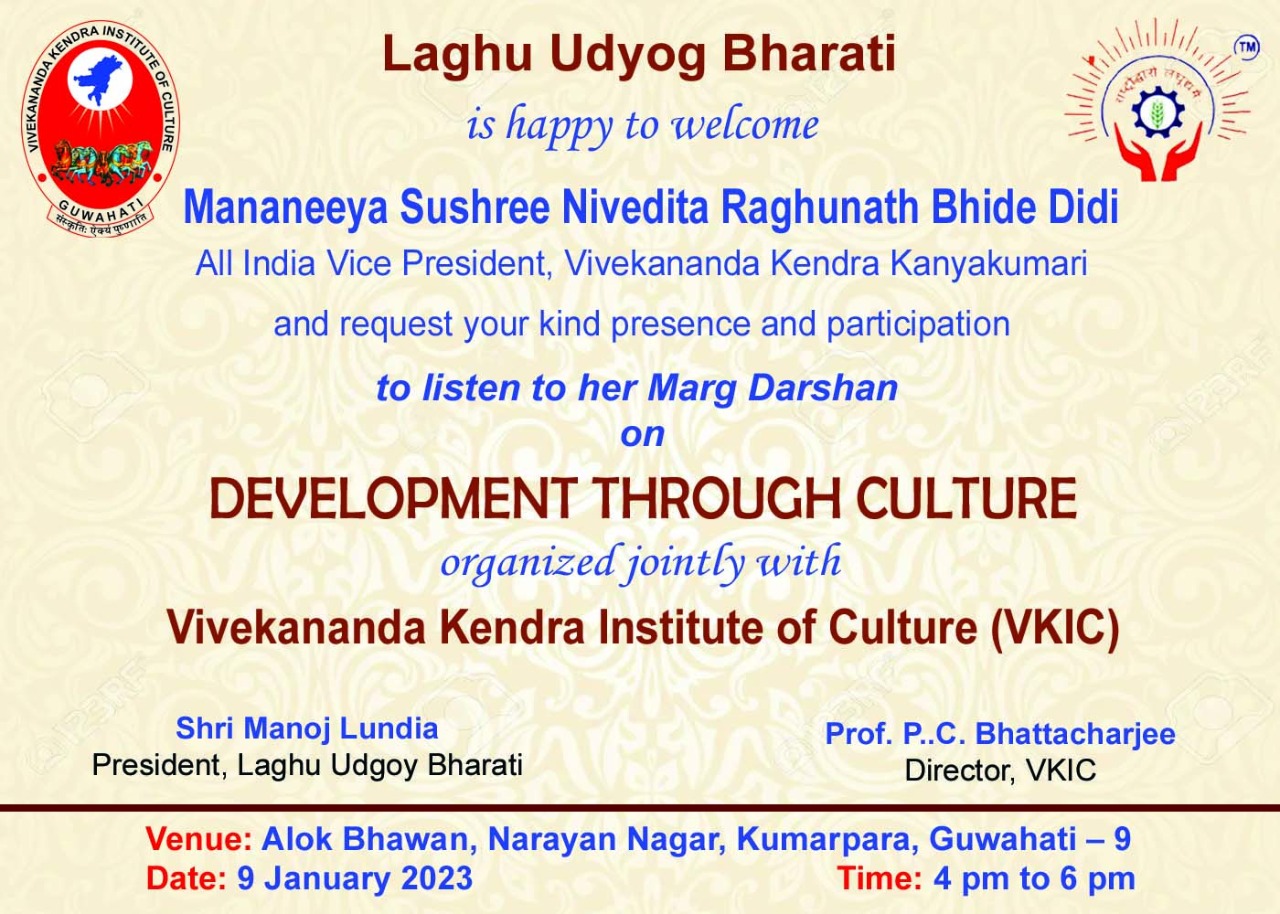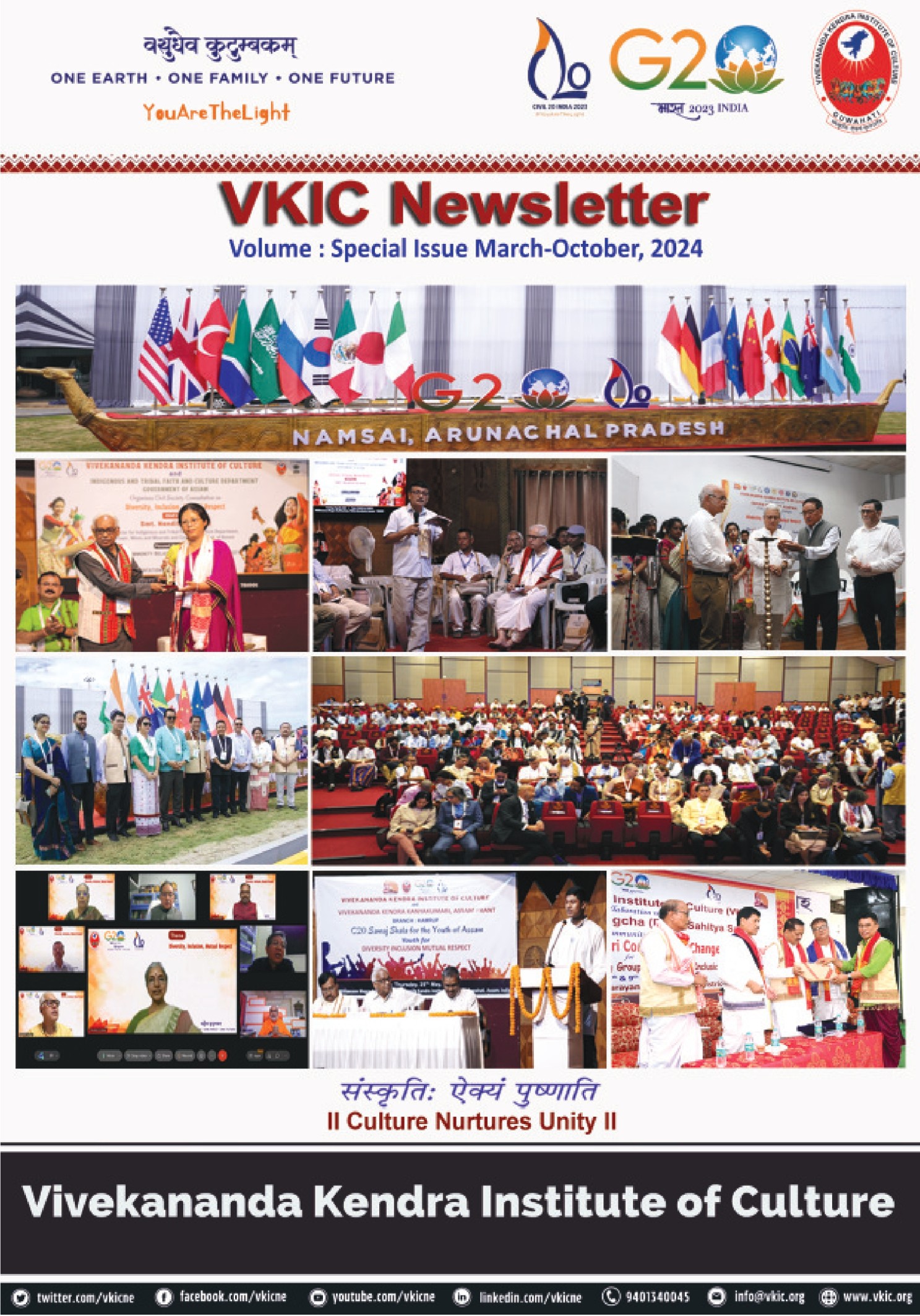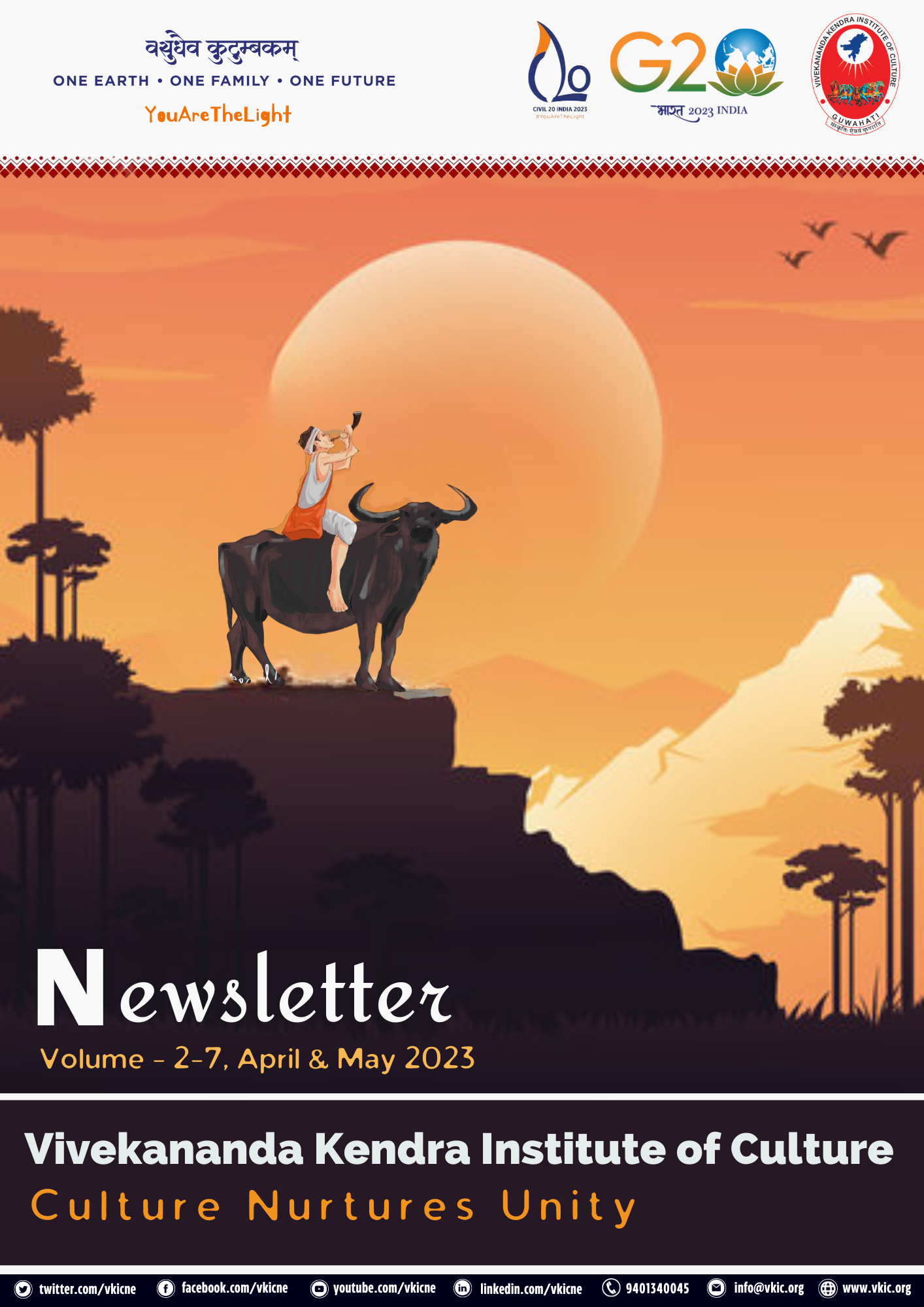Sanskriti Aniveshak | Session-II
26th Foundation Day Celebration
Sanskriti Anveshak Curtain Rising Programme
First Session of Sanskriti Aniveshak
Inaugural Programme of Sanskriti Anveshak
A Glimpse into The Karbi Way of Life
The short stay at Diphu, Karbi Anglong gave a whole new shape to the maiden purpose of collecting the reviewed papers presented in Karbi Seminar. It came to be such an inexplicable learning experience to be in the company of complete strangers who gave the feel of a lovely family in the few days of stay with them.
Tejaswi Bharat | 25th Year of VKIC
On the occasion of the 25th year of VKIC organized the "Tejaswi Bharat" Program.
The brief report of Tejaswi Bharat is given below in PDF format.
Yoga Certificate Course | VKIC, Guwahati
Yoga Certificate Course
Vivekananda Kendra Institute of Culture organizes a Yoga Certificate Course from 1st August 2022 to 31st December 2022 in VKIC, Guwahati. Mention in below some important details -
Features -
- Total duration of course 300 hours
- 15 days compulsary residential camp in Kanyakumari
- Certificate from recognised university.
Eligibility



